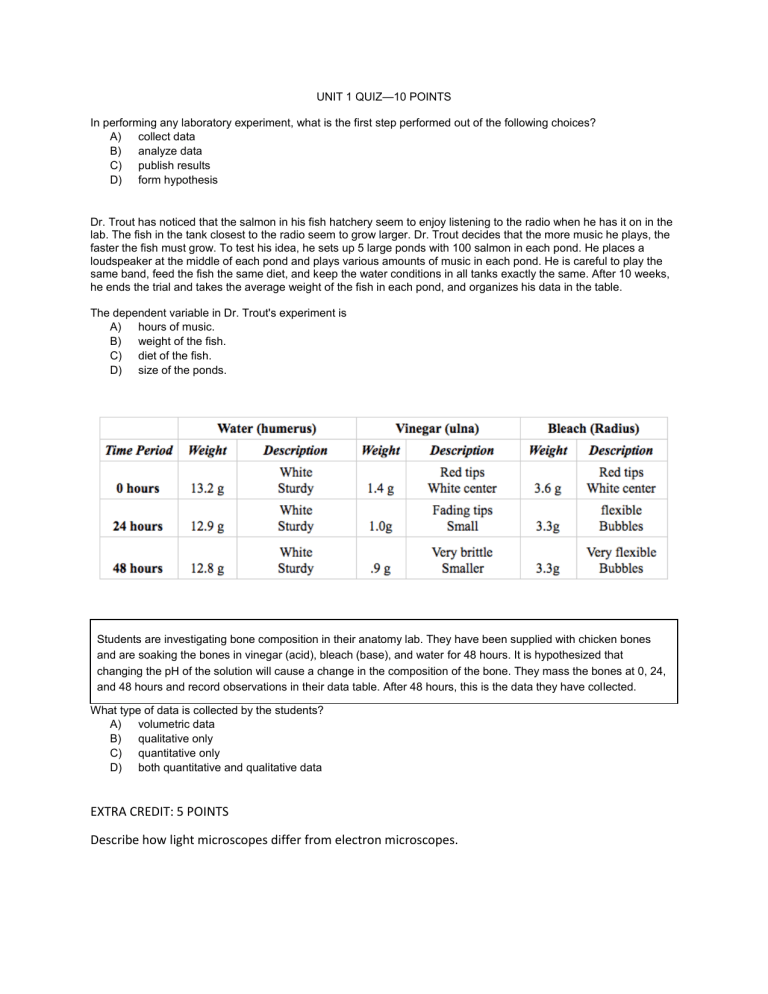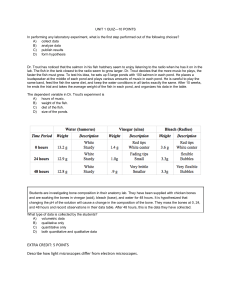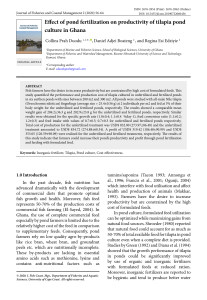
UNIT 1 QUIZ—10 POINTS In performing any laboratory experiment, what is the first step performed out of the following choices? A) collect data B) analyze data C) publish results D) form hypothesis Dr. Trout has noticed that the salmon in his fish hatchery seem to enjoy listening to the radio when he has it on in the lab. The fish in the tank closest to the radio seem to grow larger. Dr. Trout decides that the more music he plays, the faster the fish must grow. To test his idea, he sets up 5 large ponds with 100 salmon in each pond. He places a loudspeaker at the middle of each pond and plays various amounts of music in each pond. He is careful to play the same band, feed the fish the same diet, and keep the water conditions in all tanks exactly the same. After 10 weeks, he ends the trial and takes the average weight of the fish in each pond, and organizes his data in the table. The dependent variable in Dr. Trout's experiment is A) hours of music. B) weight of the fish. C) diet of the fish. D) size of the ponds. Students are investigating bone composition in their anatomy lab. They have been supplied with chicken bones and are soaking the bones in vinegar (acid), bleach (base), and water for 48 hours. It is hypothesized that changing the pH of the solution will cause a change in the composition of the bone. They mass the bones at 0, 24, and 48 hours and record observations in their data table. After 48 hours, this is the data they have collected. What type of data is collected by the students? A) volumetric data B) qualitative only C) quantitative only D) both quantitative and qualitative data EXTRA CREDIT: 5 POINTS Describe how light microscopes differ from electron microscopes.



